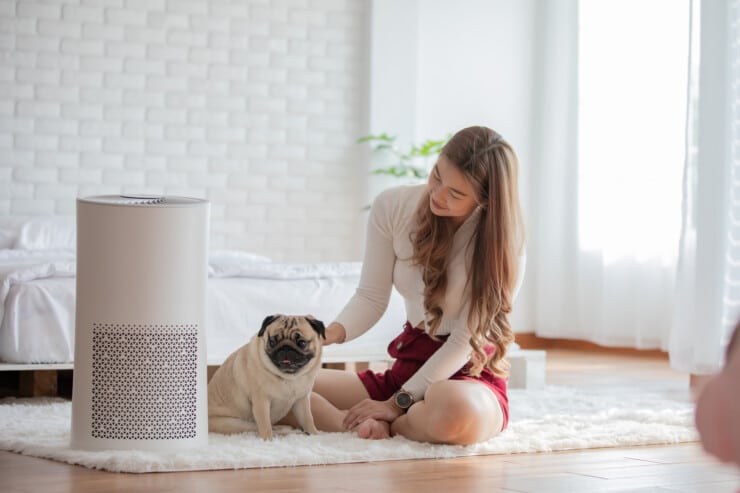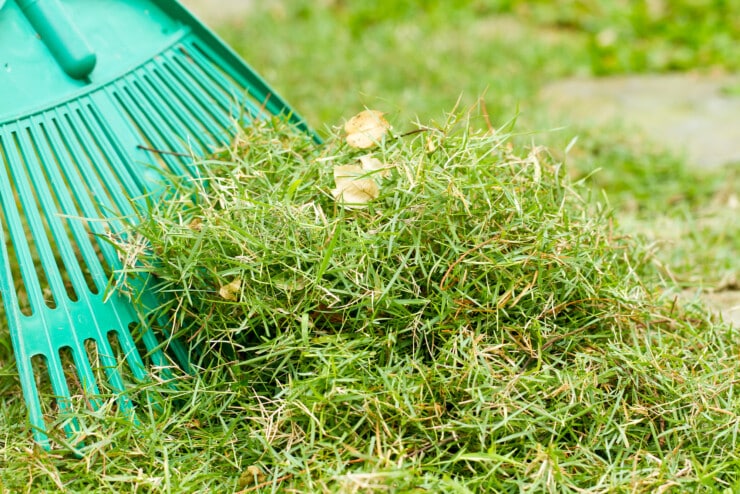Why is There a Strange Ozone Smell In My House?
Have you ever entered your house only to be welcomed by a strange scent that almost smells like chemicals?
It’s not just your nose playing tricks on you; there’s a good chance that what you’re smelling is ozone.
Now, before you start panicking and wondering if it’s harmful to breathe in or if it’ll wreak havoc on your beloved houseplants, let us tell you everything you need to know about this mysterious smell.
In this article, we’ll explore the various reasons why there might be an odd ozone scent lingering in your living space – from harmless sources like air purifiers to more serious issues like electrical malfunctions.
Plus, we’ll offer some practical tips for dealing with the issue so that you can regain control over your indoor environment and achieve olfactory bliss once again!
So grab a cup of coffee (or tea!), sit back, and prepare yourself for an enlightening journey through the world of household odors.
Identifying Ozone’s Distinctive Scent

Have you ever wondered what that peculiar smell in your house is and how to pinpoint its source? You’re not alone!
Many people are curious about ozone detection, especially when the scent seems out of place.
The ability to identify this unique aroma can offer a sense of mastery over our living spaces and help us understand where these scent origins lie.
The strange smell often described as ‘fresh’ or reminiscent of an electrical storm might be due to the presence of ozone.
This triatomic oxygen molecule carries a distinctive scent that some compare to chlorine or bleach but with a metallic undertone.
It’s produced naturally by lightning during thunderstorms, which explains why we may associate it with those events.
However, it can also form through human-made processes such as electronic air purifiers, photocopiers, laser printers, and even electric motors.
So now that you know more about ozone and its distinct fragrance, keep your senses alert for any unusual odors around your home.
By doing so, you’ll become better equipped at detecting potential sources of ozone emissions and addressing them accordingly.
Not only will this newfound knowledge empower you to maintain a healthier environment within your home, but it will also satisfy that subconscious desire for mastery we all crave.
Happy sniffing!
Common Sources Of Ozone In Homes
If you’re wondering why your home has a peculiar ozone smell, one possible reason could be the presence of ozone generators.
Ozone generators are devices specifically designed to produce ozone gas – an unstable molecule composed of three oxygen atoms (O3).
These machines are commonly used for air purification purposes, as they help eliminate odors, bacteria, and mold in indoor spaces.
However, if not properly maintained or excessively used, these generators can emit excessive amounts of ozone into the environment leading to that unmistakable sharp odor.
Another culprit behind the mysterious ozone scent lurking around your house might be household appliances.
Surprisingly enough, some everyday items like laser printers and air purifiers release small quantities of ozone during operation.
Even though this amount is typically harmless and goes unnoticed by most people, it can still contribute to that distinct aroma over time – especially in smaller or poorly ventilated areas.
To mitigate this issue, consider relocating such appliances to a more open space with better airflow or investing in low-emission alternatives.
Taking control of your living space’s indoor air quality doesn’t have to be overwhelming!
A great starting point is understanding where those unusual smells come from so you can effectively address them head-on.
Potential Health Effects Of Ozone Exposure

Now that we’ve opened Pandora’s box and delved into the common sources of ozone in homes, it’s time to consider the potential health effects of prolonged exposure.
Breathing in excessive amounts of ozone may not only tickle your nose but can also have some unfavorable consequences for your well-being.
Ozone allergies are no laughing matter; they can exacerbate existing respiratory conditions such as asthma or bronchitis.
In fact, even healthy individuals might experience discomfort ranging from coughing and chest pain to shortness of breath when exposed to elevated levels of ozone.
The risks associated with this sneaky gas don’t stop there – long-term exposure has been linked to more severe respiratory illnesses and complications, making it essential to address any suspected issues promptly.
To protect yourself and those around you, it is crucial to identify and eliminate the source(s) of excess ozone within your home.
Taking proactive steps like proper ventilation, regular maintenance of electronic equipment, avoiding products that generate high levels of ozone, and investing in air purifiers designed specifically for reducing these emissions will go a long way toward safeguarding everyone’s health under your roof.
By taking charge now, you’ll breathe easier knowing that harmful ozone won’t be lurking behind every corner.
Addressing And Eliminating The Odor
I’m sure we all want to get to the bottom of this strange ozone smell in the house.
To do that, we need to identify the source first.
Then, we can better understand what’s causing the odor.
Once we have a better understanding, we can work on removing the smell from the house.
Let’s discuss each of these steps in more detail.
Identifying The Source
You might be wondering, ‘What’s that strange ozone smell in my house?’
Identifying the source of such an odor is crucial to addressing and eliminating it effectively.
Let’s dive into some possible reasons behind this peculiar scent and how you can track down its origin.
First off, consider your surroundings. Are there any indoor plants or devices like air purifiers that could be producing ozone?
Some people have ozone allergies which make them more sensitive to these smells.
Additionally, certain household appliances, such as laser printers or photocopiers, may emit small amounts of ozone during operation.
To pinpoint the source, take note of when and where you detect the odor most prominently – it will give you a better idea of what might be causing it.
Now that we’ve discussed potential sources within your home, let’s not forget external factors contributing to that odd aroma.
Did you know car exhausts are also known for releasing ozone gases?
If your windows are open near busy roads or parking spaces, those fumes could drift inside your living space.
Keep an eye on outdoor activities as well – nearby construction sites or industrial facilities might contribute to increased levels of airborne pollutants.
By keeping these possibilities in mind, finding out why there’s a strange ozone smell in your house becomes much easier!
Understanding The Causes
Now that we’ve explored potential sources of that peculiar ozone smell in your home, it’s essential to understand the causes behind these odors.
By gaining a deeper insight into ozone formation factors and natural occurrences, you’ll be well-equipped to address and eliminate this peculiar scent effectively.
Remember, knowledge is power – and in this case, it’s the key to mastering your indoor air quality.
Ozone doesn’t just pop up out of nowhere; specific conditions contribute to its creation both naturally and artificially.
For instance, natural ozone occurrences include thunderstorms or ultraviolet radiation from sunlight interacting with pollutants in the atmosphere.
On the other hand, artificial triggers may involve electrical appliances or devices like air purifiers generating small amounts of ozone gas as they operate.
Familiarizing yourself with these factors will give you an edge when tackling any unwanted smells lingering within your living space.
So go ahead—embrace your inner detective by investigating all possible culprits behind that uninvited aroma!
Armed with this newfound expertise on ozone formation factors and natural occurrences, you’re now fully prepared to sniff out the source and take action for a fresher-smelling home environment.
Removing The Odor
With a solid understanding of the potential odor sources and ozone formation factors under your belt, it’s time to shift gears and focus on tackling that pesky smell head-on.
After all, you’re not just here to identify the issue—you want to be armed with effective ozone solutions for banishing those unwanted odors from your home once and for all!
The good news is there are plenty of ways to remove lingering scents effectively while ensuring a safe, healthy living environment.
Removing the odor may seem daunting at first, but don’t worry: by employing practical strategies such as ventilation improvements or investing in air purifiers specifically designed for ozone removal, you’ll have your home smelling fresh again in no time.
And let’s not forget about regular maintenance checks on electrical appliances—after all, prevention is always better than cure.
By staying one step ahead and addressing potential issues proactively, you can avoid any unwelcome surprises down the line.
So go forth and conquer those stubborn smells with newfound confidence!
As you put these ozone solutions into action, remember that maintaining an odor-free home isn’t merely about reacting to problems—it also involves taking preventative measures to ensure long-lasting freshness.
With this holistic approach in mind, you’re well on your way towards creating a pristine oasis where you can truly relax and breathe easy.
Preventative Measures For Maintaining Air Quality

Keeping the air in your home fresh and clean is not only essential for comfort, but also vital for maintaining good health.
To ensure that you’re breathing high-quality air indoors, it’s important to take some preventative measures.
By implementing these steps, you’ll be well on your way to creating a healthier living environment.
- Invest in air purifiers
Air purifiers can do wonders when it comes to eliminating strange odors and improving overall indoor air quality.
These devices work by trapping particles like dust, pollen, mold spores, and pet dander from the atmosphere inside your house.
Some even have filters designed explicitly for tackling smells caused by chemicals or ozone emissions.
- Improve ventilation
Ventilation improvement is another crucial step in ensuring that fresh outdoor air circulates throughout your home while pushing out stale indoor air laden with pollutants.
This can be achieved by opening windows whenever possible or installing exhaust fans in rooms where moisture levels are higher than average.
- Regularly maintain heating and cooling systems
Without a doubt, taking care of your heating and cooling system plays a significant role in maintaining optimal indoor air quality too.
Be sure to replace filters regularly according to the manufacturer’s recommendations as dirty filters may recirculate polluted air back into your living space instead of filtering them out effectively.
Moreover, having professionals conduct routine maintenance checks will help identify any issues related to leaks or malfunctions early on before they escalate into more severe problems causing unpleasant ozone-like smells within your home.
So there you have it – investing time and effort into these precautionary actions can make all the difference when striving for an odor-free abode filled with refreshing breathable air!
Frequently Asked Questions
Can certain household items or materials emit an ozone-like smell, even if they are not an actual source of ozone?
Believe it or not, some household items and materials can indeed emit an ozone-like smell without actually being a source of ozone.
This intriguing phenomenon could be due to certain chemical reactions or off-gassing from various products such as electronics, plastics, or even carpets.
While these odors might initially set off alarm bells for those with ozone allergies, fear not – they often don’t pose the same risks that actual ozone does.
However, if you’re still keen on achieving odor elimination in your quest for mastery over your home’s environment, consider airing out affected areas and using air purifiers equipped with activated carbon filters to help neutralize any lingering scents.
How does humidity or temperature impact the presence and detection of ozone odor in a home?
Imagine unlocking a hidden door to the world of ozone detection, where humidity effects hold the key.
Humidity and temperature play significant roles in both the presence and perception of that elusive ozone scent within your home.
As moisture levels rise, so does the capacity for ozone molecules to react with other compounds, potentially intensifying or altering that tell-tale aroma.
Furthermore, our ability to detect odors is heightened in humid environments, making it easier for us to pick up on that signature whiff.
So don’t be surprised if you find yourself becoming an unwitting master of ozone sleuthing as those summer months roll around – just remember that this enigmatic element may be more influenced by its surroundings than you might think!
Are there any specific household plants or natural remedies that can help reduce or neutralize ozone levels indoors?
If you’re looking to tackle indoor ozone levels with a natural touch, incorporating ozone-absorbing materials and creating DIY ozone filters using household plants is an excellent strategy.
Many houseplants boast air-purifying capabilities that can help neutralize or reduce harmful pollutants like ozone.
For instance, spider plants, snake plants, and peace lilies are known for their ability to improve indoor air quality while adding a refreshing aesthetic to your living space.
By populating your home with these green warriors, you’ll not only breathe easier but also gain the satisfaction of mastering your environment in a sustainable way.
Can pets or other animals be affected by ozone exposure, and if so, what signs should pet owners look for?
Absolutely, pets and other animals can be affected by ozone exposure, exhibiting symptoms similar to those experienced by humans.
It’s essential for pet owners to keep an eye out for signs such as coughing, wheezing, shortness of breath, or excessive sneezing in their furry friends.
Irritation of the eyes and nose might also indicate that your pet has been exposed to harmful levels of ozone.
If you suspect your pet is experiencing any of these ozone exposure symptoms, it’s crucial to take action promptly and look into pet safe ozone alternatives like air purifiers specifically designed for homes with pets, or utilizing natural remedies like indoor plants that are known to absorb pollutants and reduce airborne irritants.
How can I determine if the ozone smell in my home is a result of an indoor source versus outdoor pollution or environmental factors?
It may feel like you’re on an epic quest to uncover the source of that mysterious ozone smell in your home, but fear not!
To determine if it’s caused by indoor sources or outdoor pollution/environmental factors, start by examining any indoor appliances that could potentially produce ozone, such as air purifiers or laser printers.
Next, arm yourself with knowledge by investing in an ozone detector – this powerful tool can help pinpoint areas where ozone levels are elevated within your home.
By ruling out or identifying potential indoor culprits and monitoring your home’s ozone levels, you’ll be well on your way to achieving mastery over this enigmatic odor and creating a safer environment for both you and your furry companions.
Final Thoughts
It’s important to be aware of potential sources of ozone-like smells in your home and take necessary steps to address them.
Humidity, temperature, indoor plants, and pets can all play a role in the presence or detection of such odors.
By identifying the source and implementing natural remedies or adjusting environmental factors as needed, you can ensure a safer and more pleasant living environment for yourself and your loved ones.
For instance, I once had a friend whose house had an unexplained ozone odor.
After thorough investigation, they discovered that their air purifier was emitting high levels of ozone due to a malfunction.
By replacing the faulty device and incorporating some ozone-absorbing plants into their home decor, they were able to effectively eliminate the smell and improve overall air quality.







